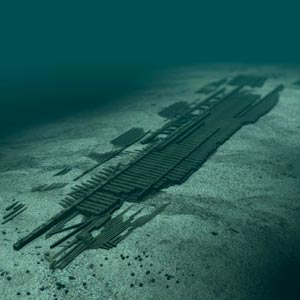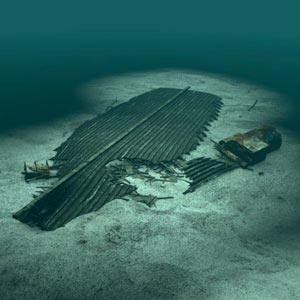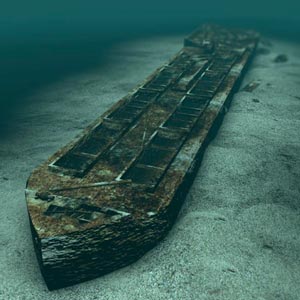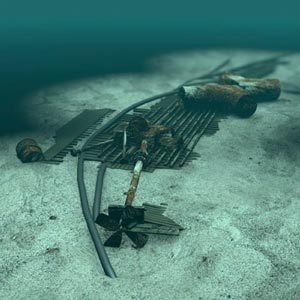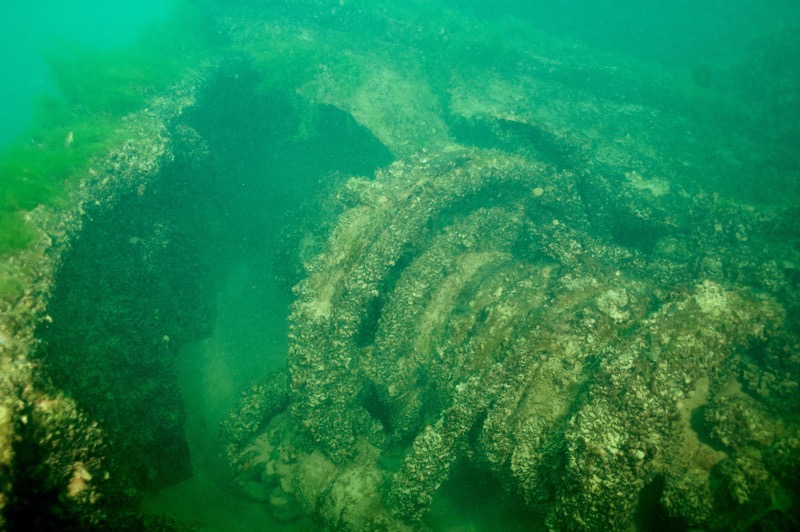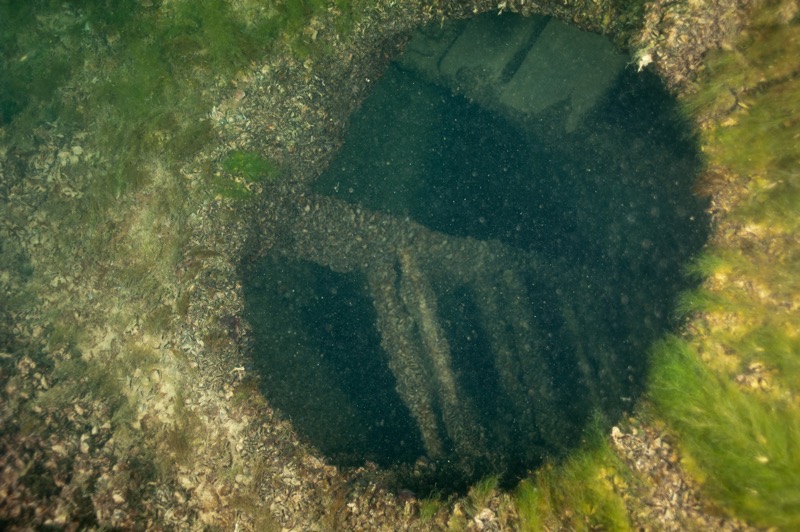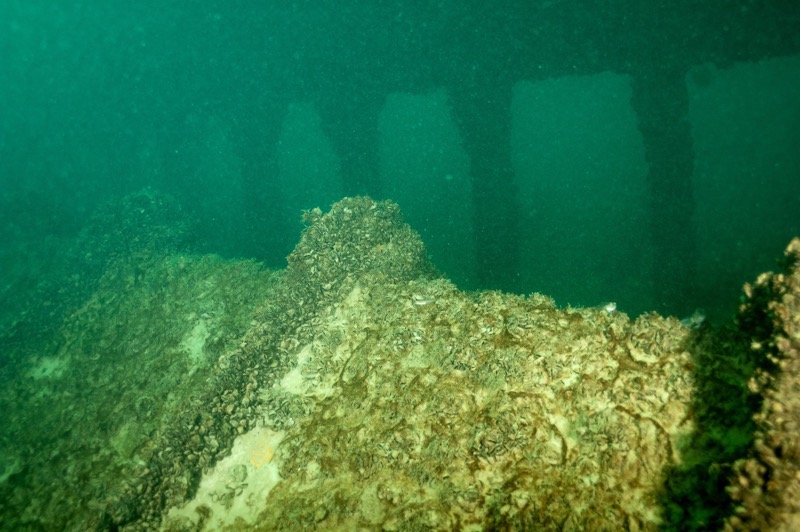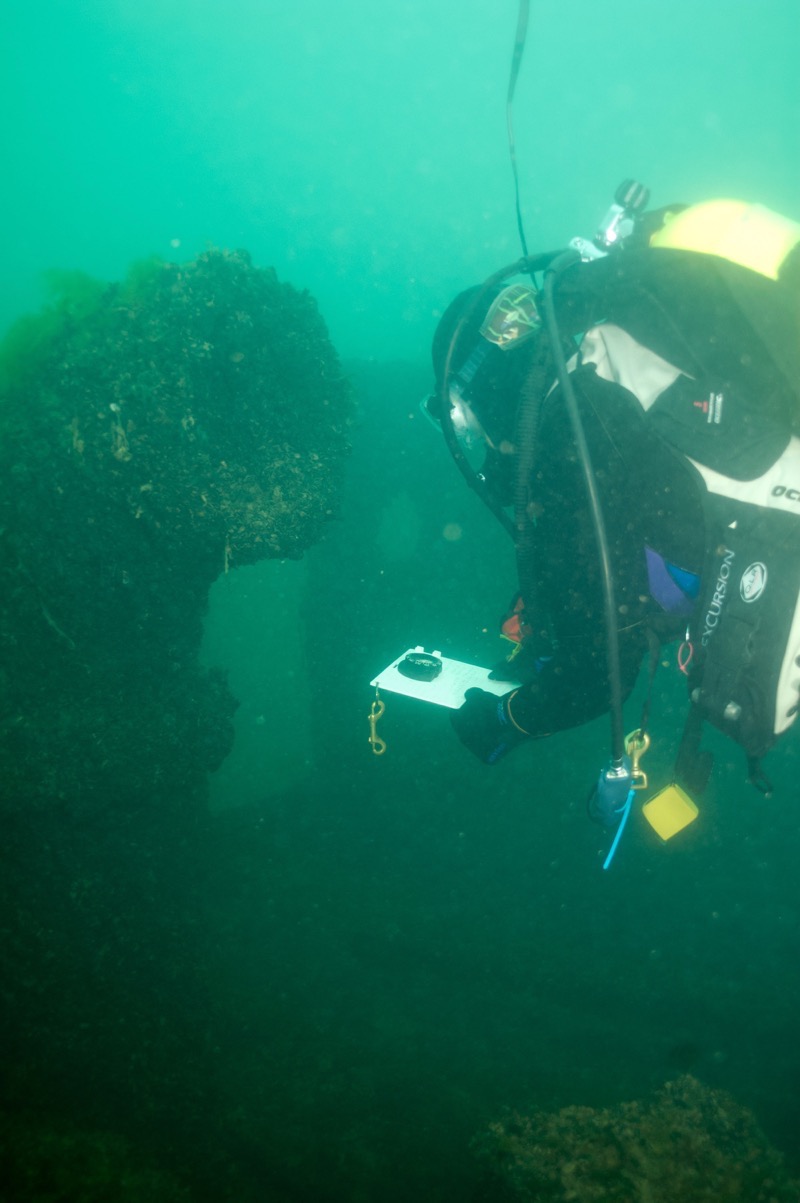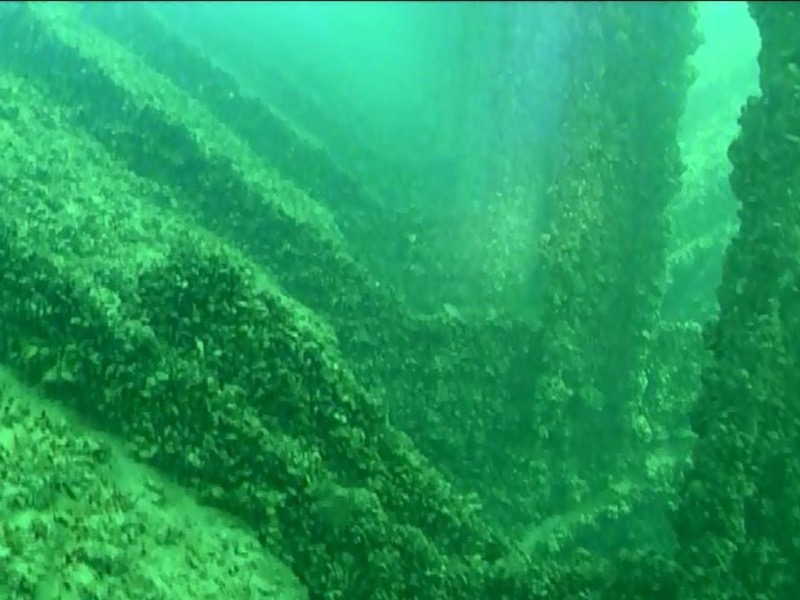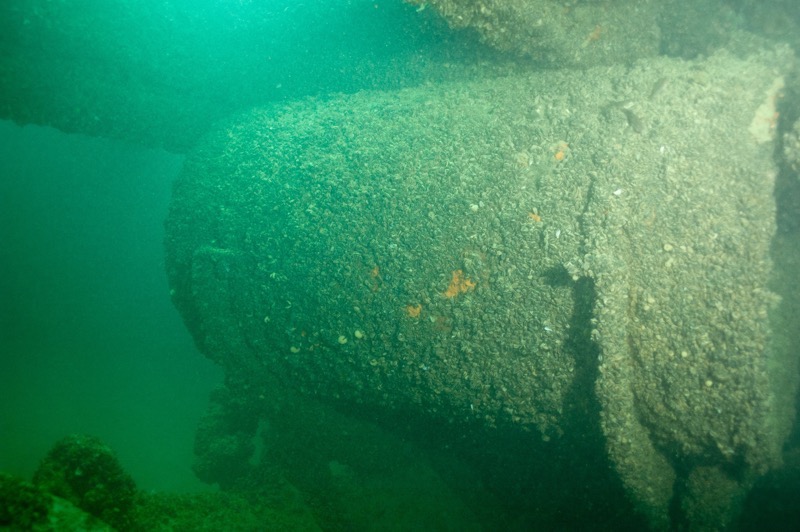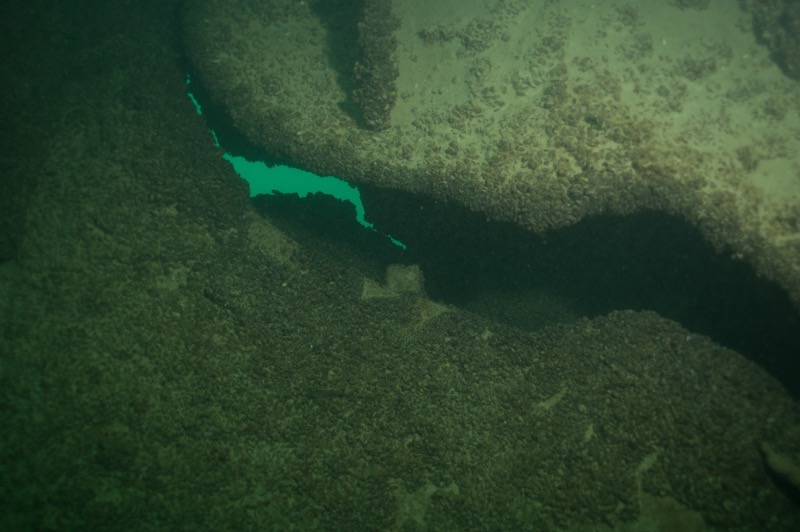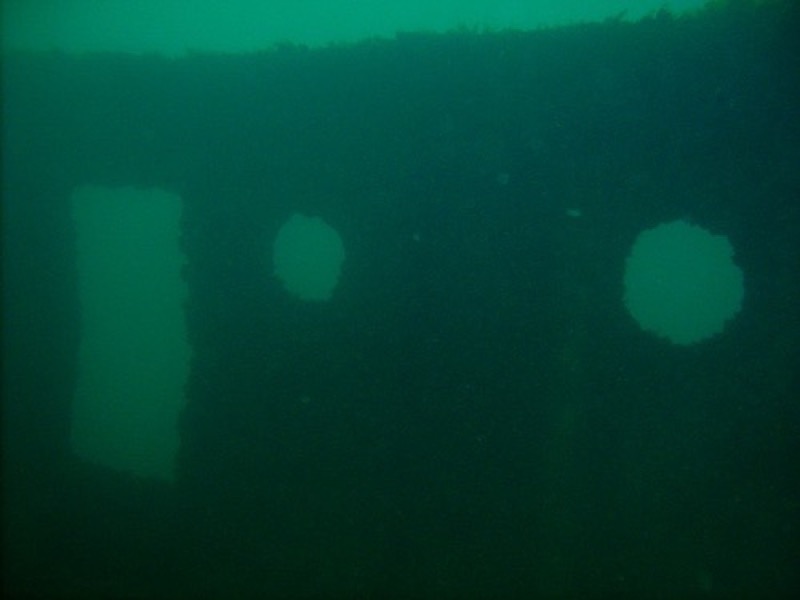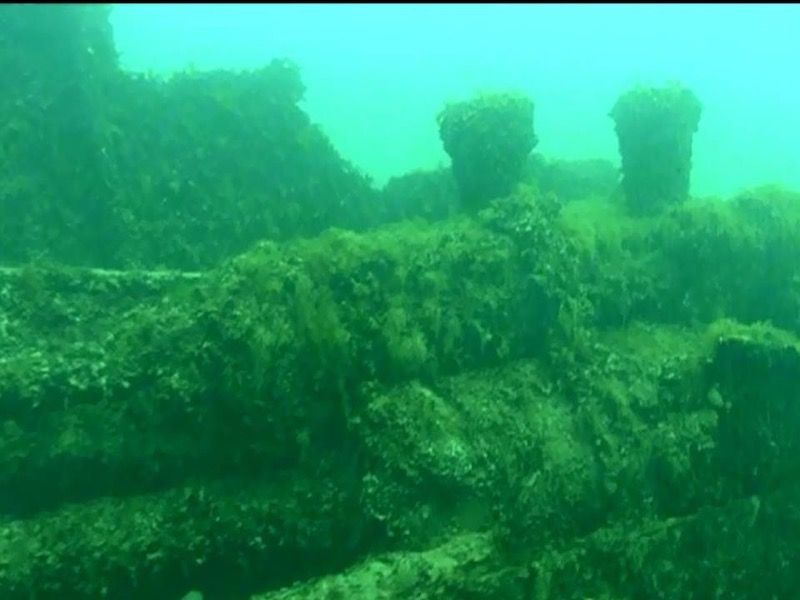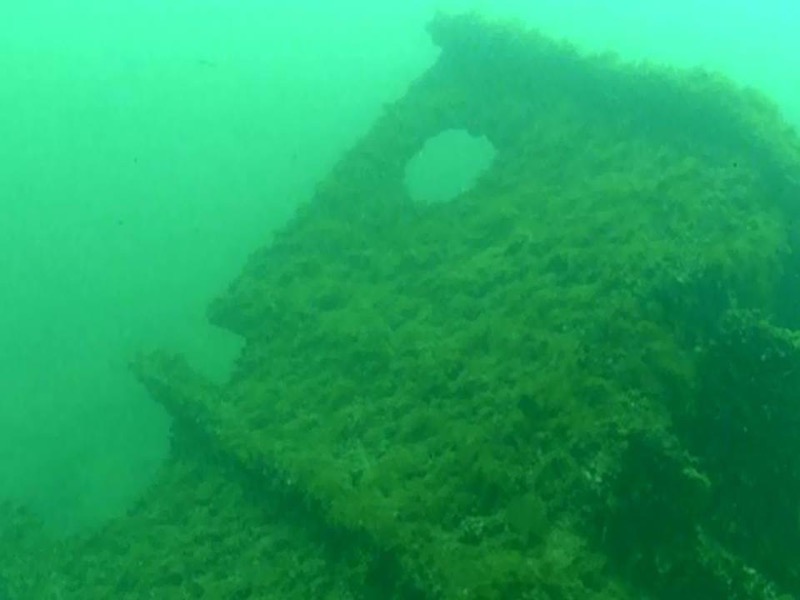Sorry - Your web browser does not support all features of this 3D tour
Please upgrade to the latest version, or download a modern web browser such as Google Chrome or Mozilla Firefox.
Ignore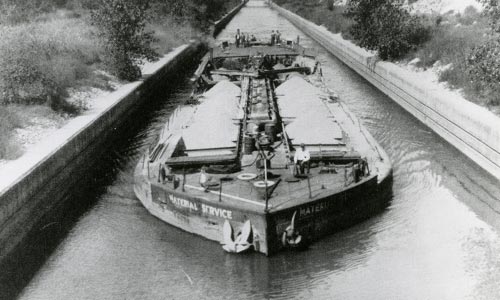
Material Service
- Type: Self-unloading barge
- Builder: Leatham D. Smith for the Smith-Putnam Navigation Company
- Built: 1929, Sturgeon Bay, WI
- Length: 239.7 feet
- Beam: 40.1 feet
- Draft: 13.9 feet
- Weight: 1077 gross tons
- Date Sunk: 1936
- Depth of Wreck: 35 feet
The Material Service barge was a steam-operated barge constructed for the Smith-Putnam Navigation Company; specifically built to transport sand and gravel to and from Lake Michigan and docks on the Chicago River. It was leased to the Material Service Company for ten years and was named in honor of that company. At the time of its construction, the Material Service barge combined inventive structural and functional design elements into its system of self-unloading levers, pulleys and a low superstructure which allowed it to travel through the Chicago River and canals without requiring bridge openings. Because of these innovative features, the Material Service barge was a unique 20th century motorship. Significant features of this shipwreck are the substantial intact mainframe; the remaining self-unloading levers, conveyors, and pulleys; the retractable A-frame and intact machine components.
The Material Service left the Lockport quarry with a cargo of 2000 tons of crushed rock for transport to a supply yard in South Chicago. It foundered under storm conditions on July 29, 1936, and 15 lives were lost. When the Material Service sunk, it was under the command of Captain Charlie D. Brown, who perished with the ship. It was reported that a large wave washed over the ship. It was reported that a large wave washed over the ship causing it to list sharply and quickly, before much of the crew could react and get free of their bunks. It seemed to right itself slightly for a moment but then was quickly swamped by waves. It took but a few minutes for the barge to sink completely and settle on the bottom of Lake Michigan. At the time of the disaster the ship had a cargo of 2,500 tons of sand or gravel. The Material Service was owned by Material Service Company of Chicago until 1936 when it was lost. The loss was estimated at $500,000; however, at least two salvage operations were conducted on the Material Service, one in late in 1936 and one in 1945, but specifically what was salvaged at either time was not detailed.


